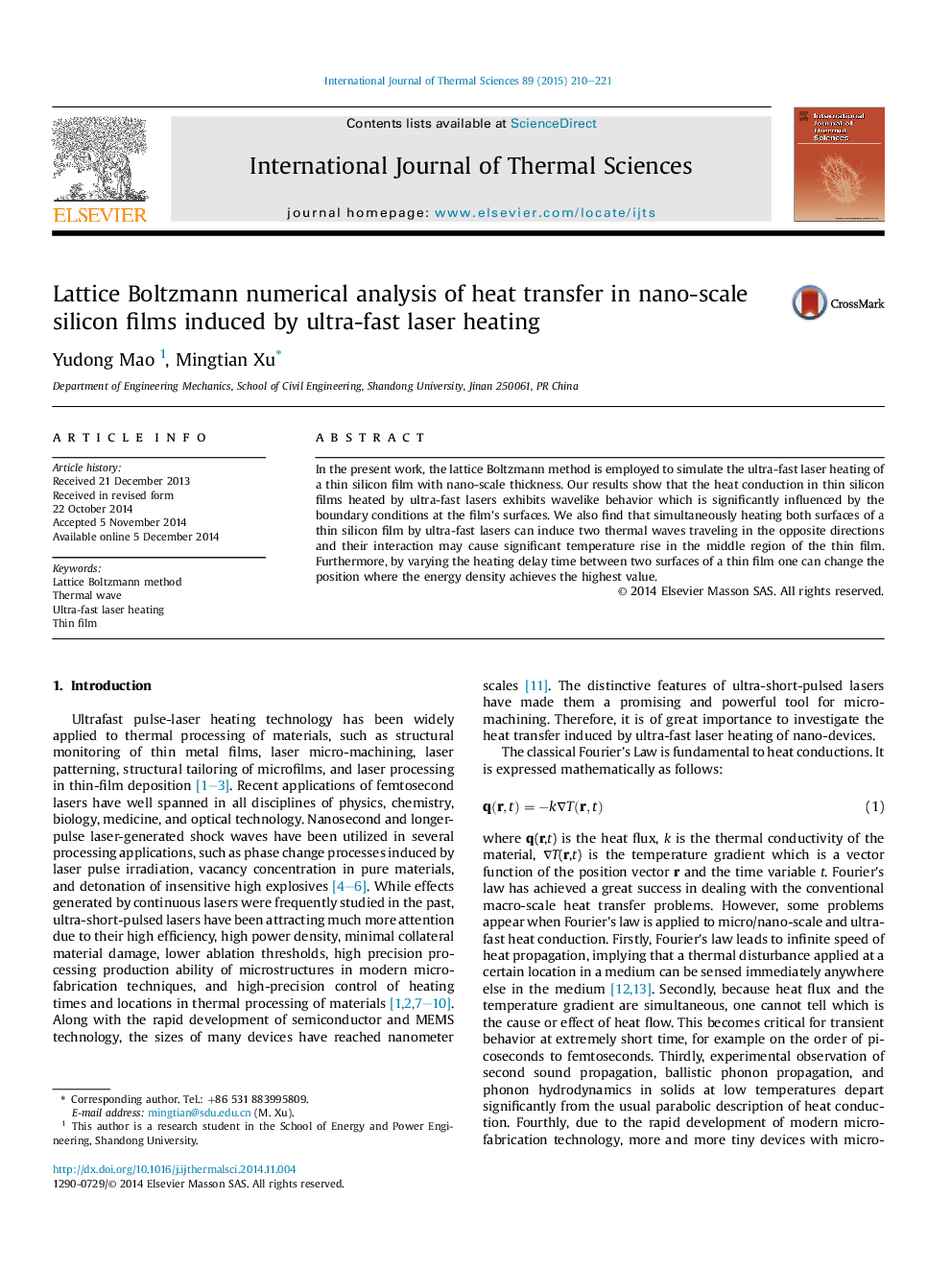| Article ID | Journal | Published Year | Pages | File Type |
|---|---|---|---|---|
| 668204 | International Journal of Thermal Sciences | 2015 | 12 Pages |
•Our results show that the heat conduction in thin silicon films heated by ultra-fast lasers exhibits wavelike behavior.•Simultaneously heating two boundary surfaces induces two thermal waves and their interaction causes temperature rise.•Varying the heating delay times between boundary surfaces can change the position where energy achieves the highest value.
In the present work, the lattice Boltzmann method is employed to simulate the ultra-fast laser heating of a thin silicon film with nano-scale thickness. Our results show that the heat conduction in thin silicon films heated by ultra-fast lasers exhibits wavelike behavior which is significantly influenced by the boundary conditions at the film's surfaces. We also find that simultaneously heating both surfaces of a thin silicon film by ultra-fast lasers can induce two thermal waves traveling in the opposite directions and their interaction may cause significant temperature rise in the middle region of the thin film. Furthermore, by varying the heating delay time between two surfaces of a thin film one can change the position where the energy density achieves the highest value.
